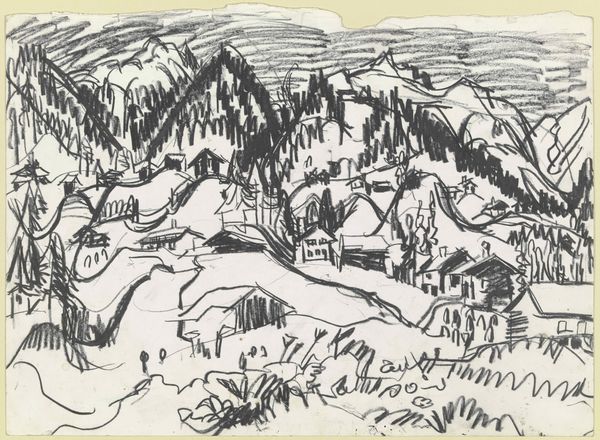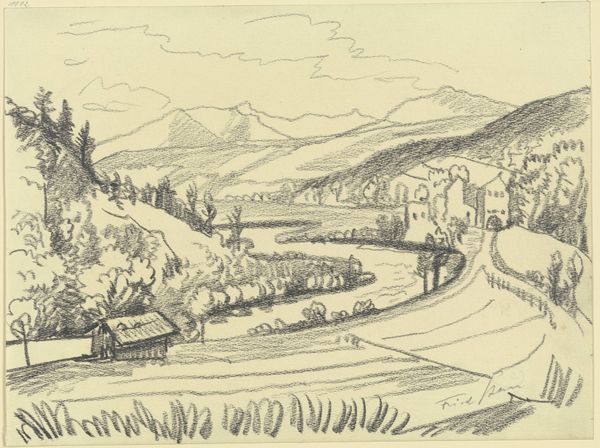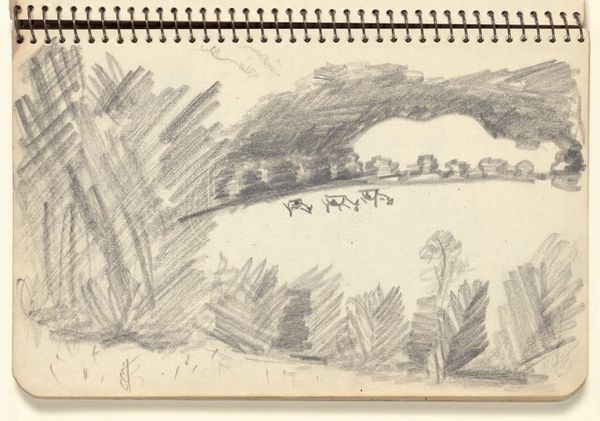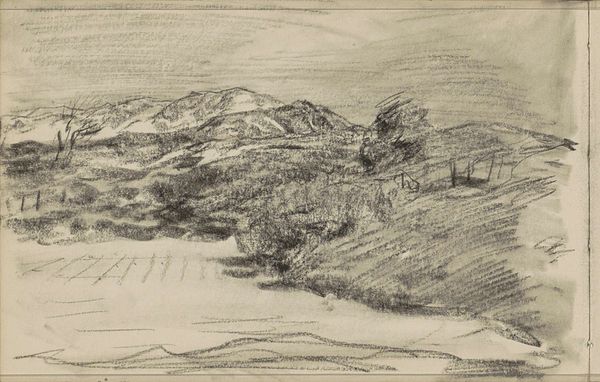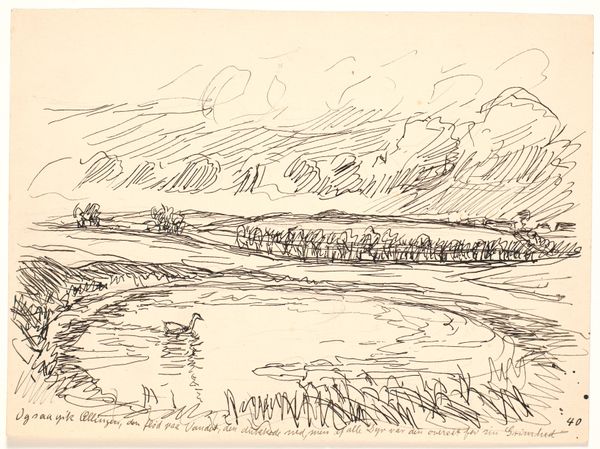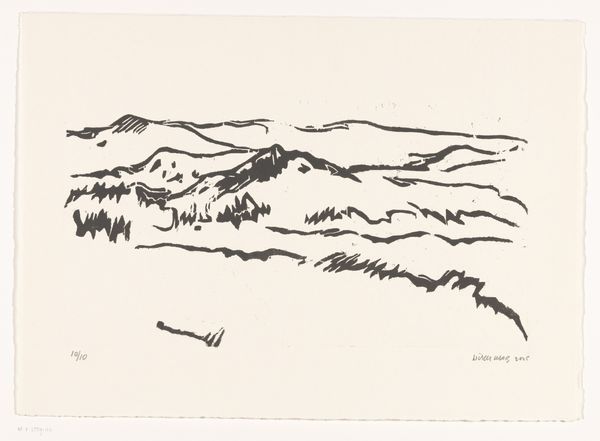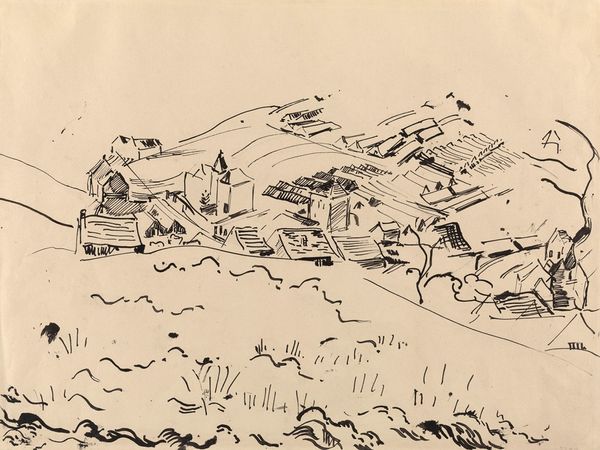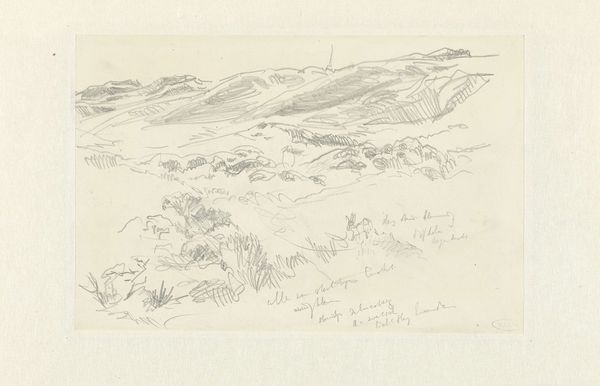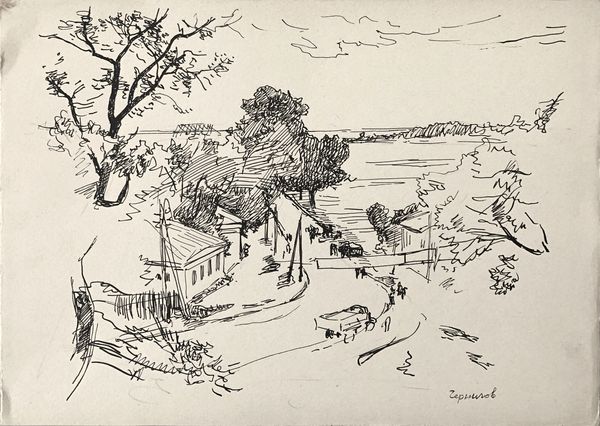
drawing, ink, pen
#
drawing
#
ink drawing
#
pen sketch
#
landscape
#
ink
#
line
#
pen work
#
sketchbook drawing
#
pen
#
sketchbook art
#
modernism
#
realism
Copyright: Hryhorii Havrylenko,Fair Use
Curator: Welcome. Today, we are looking at Hryhorii Havrylenko's 1958 ink drawing, "Carpathian Landscape." Editor: Immediately, there’s a raw energy to it. The bold, unwavering lines give it an almost anxious feel. The density varies across the surface, creating depth despite the stark medium. Curator: Indeed. What interests me most is how the very starkness contributes to its dynamism. Consider how Havrylenko uses the limited tools available to suggest spatial depth and textural contrast. The stark black lines delineate form, with the density of line work implying areas of shadow and dense vegetation. It pushes against purely representational art. Editor: I think seeing the broader context of 1950s Ukraine heightens this anxiety. It wasn't a safe time. Havrylenko, part of a new generation, sought to express suppressed Ukrainian identity through art. The landscape itself, a constant in Ukrainian culture, becomes a symbol of resilience and cultural identity under pressure. The rapidly drawn pen strokes can then be viewed as the artists way of expressing these cultural restrictions and a yearning to depict raw feeling within their cultural framework. Curator: It's intriguing how this framework could change how we interpret form. Semiotically, the repeated strokes signify "tree," but more importantly, their arrangement suggests both the density of the forest and the topography of the rolling Carpathian hills. We should consider that the interplay of these marks constitutes its formal essence, the 'language' through which Havrylenko articulates the visual structure of this landscape. Editor: I would suggest his artistic choices were a method for coding identity, a strategy when overt cultural expression risked persecution. Art allowed one to challenge and assert identity in subtle ways. Havrylenko does this as he links identity and location in a way that suggests survival despite erasure. Curator: That’s a compelling reading, acknowledging art’s capacity as a vessel for resistance, its visual components operating as carriers of suppressed cultural narratives. We could almost propose that the drawing serves as a site of cultural encoding. Editor: I am in agreement. To observe "Carpathian Landscape" is to look directly into one of these encoded artistic decisions. Curator: An approach of how artistic innovation and historical-social forces come into conversation with each other.
Comments
No comments
Be the first to comment and join the conversation on the ultimate creative platform.
